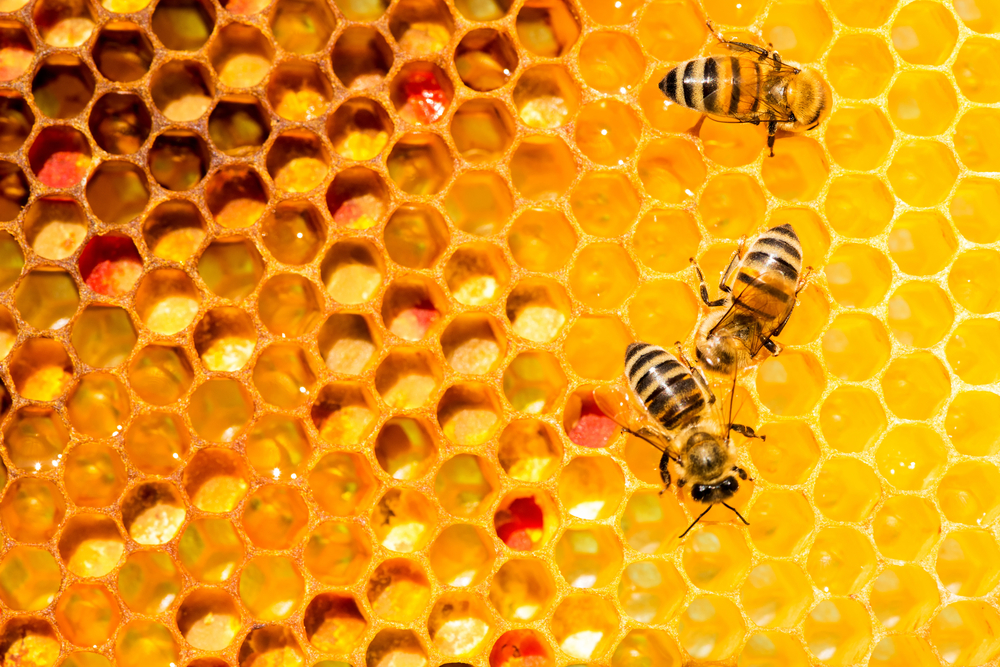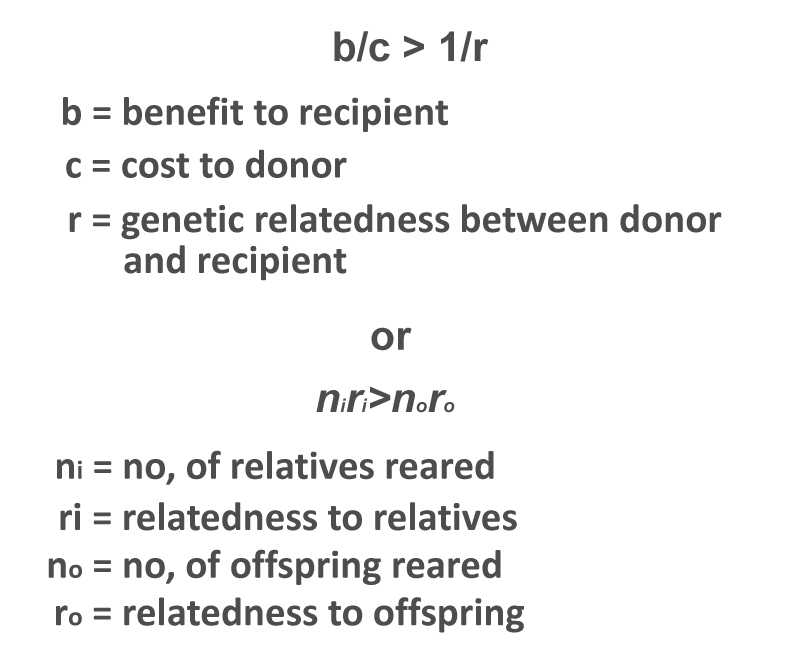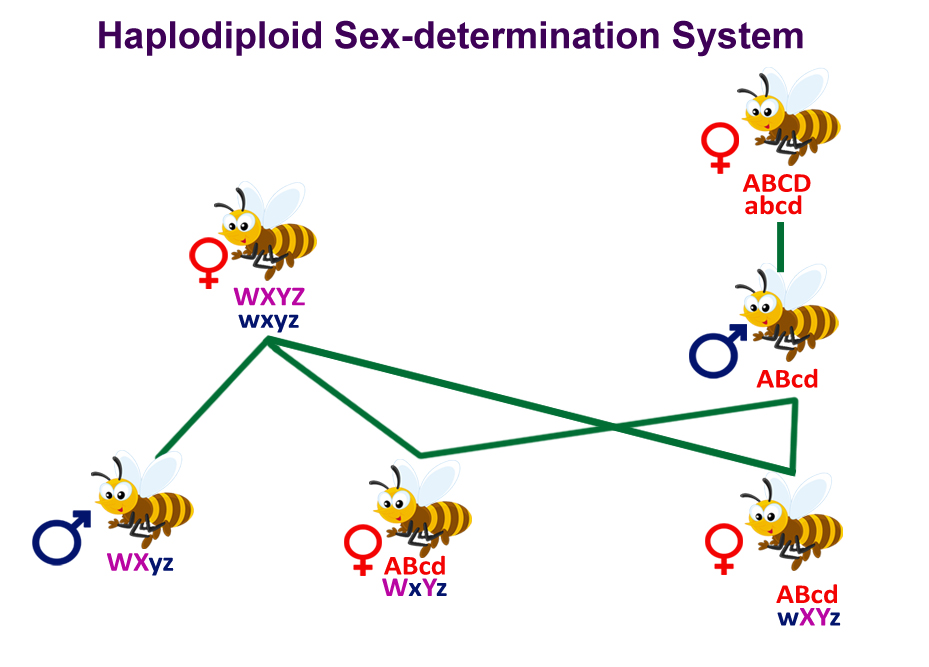Table of Contents (click to expand)
Female worker bees lost their ability to reproduce because they share more DNA with their sisters than with their children.
In 1831, Charles Darwin began his legendary journey to the Galapagos Islands on the HMS Beagle to escape his boring life as a failing physician. On that trip, he experienced one of the most important intellectual epiphanies in human history – he began conceptualizing his theory of natural selection. Another man, Alfred Russell Wallace, stumbled upon a similar epiphany in the Amazon rainforest while collecting exotic bird species. These two men laid the first foundations of evolution and natural selection as we know them today.
However, there was one tiny glitch in this nearly perfect tale. Darwin couldn’t figure out why in some animals, such as bees, only one female could reproduce, while all the others were sterile. Darwin failed to solve this problem in his lifetime, and in fact, it took many more years and numerous valiant attempts to finally reach a satisfying answer.

Reproductive Fitness And Mating
In the natural world, reproduction is all important. Living beings wage war just to woo the opposite sex, as the ultimate goal is to get as much of one’s genome into the next generation as possible. To achieve this, animals work to demonstrate that their DNA is superior and should be perpetuated.
Darwinian Fitness
Since plants and (most) animals lack microscopes or the luxury of performing DNA sequencing, other observable strategies have been employed. There are flamboyant colors, elaborate dances, big muscles, perfumery and loud, deafening roars. All of this is done in the great pursuit of spreading as many of their genes as possible on to the next generation. This is what evolutionary biologists call Darwinian fitness, relative fitness or reproductive fitness (these terms are often used interchangeably).
Relative fitness is formally defined as the relative probability that a hereditary characteristic will be reproduced. In simpler terms, it is the likelihood that a certain characteristic will be passed down; genetically speaking, it is the probability that an allele of a gene will be expressed in future generations. At the most fundamental level, natural selection can be thought of as the process by which genes can successfully survive and thrive.
Also Read: Parthenogenesis: Can Animals Reproduce Offspring Asexually?
Inclusive Fitness Theory
Distributing the greatest number of your genes into the population can be done in one of two ways—individually, by having many offspring, or altruistically, by increasing the chances that a family member sharing part of your DNA will have many offspring. In other words, you can either increase your own fitness or increase your kin’s fitness. This is called inclusive fitness theory.
To explain this further, we’ll use an analogy from J.B.S. Haldane, the renowned geneticist and biochemist. The story goes that Haldane was once sitting with a graduate student of his in a bar when he was struck by a thought. Haldane performed some quick calculations and stated that, if only one or two of his brothers were drowning in a river, he would not bother to save them, but if more than two were drowning, he would risk his own life to rescue them. This story may or may not be true, and various versions of the tale exist, but it illustrates a key concept.
You share 100% (1.0) of your DNA with yourself. When you reproduce, each of your offspring will get 50% (0.5) of that DNA. The more offspring you have, the higher the percentage of your DNA entering the gene pool. With your siblings, you share 50% (0.5) of your DNA and 25% (0.25) of it with any nephew or niece. Therefore, caring for one sibling or 2 nieces is ostensibly the same as caring for one of your own children!
Therefore, saving 1 sibling (0.5×1=0.5) or 3 nephews/nieces (0.25×3=0.75) is less than 1.0, so you will lose part of your genome if you save them at the expense of your own life. However, if 3 siblings are drowning, it would be worth saving them, as they will have a higher chance of propagating your DNA to their offspring (0.5×3=1.50). Similar calculations would reach the same conclusion for 5 nieces/nephews (go ahead, work it out for yourself).
| Selfishness | Altruism |
| You at the bank of the river = 100% or 1 1 brother drowning = 50% or 1/2 Do not attempt to save | You at the bank of the river = 100% or 1 3 brother drowning = 150% or 3/2 Attempt to save |
| You at the bank of the river = 100% or 1 3 nephews drowning = 75% or 3/4 Do not attempt to save | You at the bank of the river = 100% or 1 5 nephews drowning = 125% or 5/4 Attempt to save |
Tabular representation of Haldane’s analogy.
Haldane said something to this effect in an article published in the now defunct magazine Penguin New Biology in 1953.
Although this illuminated part of the mystery surrounding the peculiar reproduction of social insects, it did not provide a complete and utterly satisfactory scientific answer for why female worker bees were sterile. At least, it wasn’t clarified until W.D. Hamilton entered the scene.
W.D. Hamilton was a British evolutionary biologist and geneticist who made one of the most important advancements in evolutionary biology. In 1964, Hamilton publish a wordy and relatively mathematical paper (at least for evolutionary biology at the time) titled “The Genetical Evolution of Social Behaviour”. This paper, despite its lack of eloquence, solved Darwin’s conundrum both mathematically and elegantly.
Also Read: Why Is Inbreeding Biologically Dangerous?
The Solution: Hamilton’s Rule

The above picture shows Hamilton’s rule and the mathematical formula in a simplified form.
Hamilton’s rule simply states that a particular social behavior will be favored if b, the benefit to the recipient (in terms of reproductive fitness), is greater than c, the cost born by the donor (in terms of reproductive fitness). Mathematically, this can be expressed as rb > c, where r is the coefficient of relatedness that measures the statistical relationship between the donor’s genes and recipient’s genes.
How Does Hamilton’s Rule Tell Us Anything About Social Insects And Sterile Worker Bees?
Before explaining how Hamilton’s rule explains worker bee sterility, we must take a quick look into bee reproduction and the distribution of genetic material amongst the male and female gametes.
In humans, there is a simple halving of genetic material, 23 chromosomes from the female and 23 chromosomes from the male. This isn’t the case in bees, as they are haplodiploid creatures, meaning that the female has 2n chromosomes, but the male has only n (half) chromosomes. This changes the relatedness that any offspring will have to each other and to their parents.

Daughters are only related to their mother by r = ½, but since males contribute their entire genome to the offspring, the daughters are related to their fathers by r = 1. Therefore, the manner that siblings are related to each other can be expressed as: r = 1+1/2=3/4.
Since the female workers would only be related to their offspring by r = ½, the benefit of rearing their offspring and increasing the reproductive fitness of the queen is greater than the cost. A female worker is actually helping establish her own genome in the gene pool better, as she shares more DNA with her sibling than she would with her offspring.
While Hamilton’s rule seems a bit too simple for the complexity of evolutionary biology, some of the nuances are still under debate. The idea of Hamilton’s rule being applied to more complex situations and animal societies (aside from haplodiploid insects) is complicated and there remains a good deal of debate on its usefulness in the study of social evolution.
Furthermore, as scientists probe into the molecular workings of the evolution of sterile bees (and other such social insects), there is increasing evidence that there may be many more missing pieces in the puzzle. Even so, this doesn’t diminish the importance of Hamilton’s rule, which lies in its mathematical basis, allowing it to serve as a framework for future research within evolutionary science.
How well do you understand the article above!

References (click to expand)
- The Philosophy of Social Evolution Part 2: Relatedness and .... lse.ac.uk
- Hamilton, W. D. (1964, July). The genetical evolution of social behaviour. II. Journal of Theoretical Biology. Elsevier BV.
- Gadagkar R. (2001). Survival Strategies: Cooperation and Conflict in Animal Societies. Harvard University Press
